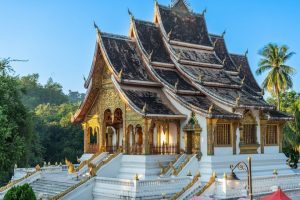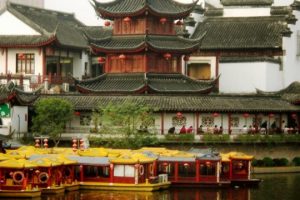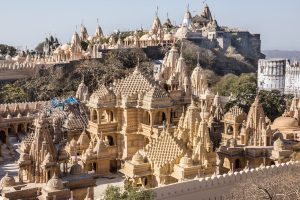
The remote island of Rapa Nui, also known as Easter Island, sits in the Pacific Ocean off the coast of Chile, and is the most isolated inhabited island, being over 2,000 km from Pitcairn Island. It is believed that Polynesians first came across the island around 1,500 years ago. They populated the island, which was rich in vegetation and trees and also offered plentiful fishing.
The Polynesian region covers a vast area of the southern Pacific Ocean from New Zealand in the southwest, Hawaii to the north and Rapa Nui as the easternmost and most remote island.
Over time, having realised that the volcanic rock from the crater of the Rano Raraku volcano was soft and easy to carve, they set about creating 313 ahus (temple platforms) around the coast of the island and populated them with giant figures known as moai. In addition, 1,000 ritual sites were carved and there were many sacred caves dotted around the island. [1]
By the 14th century CE, the Rapa Nui civilisation was at its strongest with a population estimated at 20,000. However, in an echo of our current woes, the islanders used up all the trees and failed to manage the soils, resulting in long-term ecological damage that impacted their ability to grow food and build boats.
In 1722 CE, the Dutch explorer Jacob Roggeveen discovered the island during the Easter period and named it Easter Island. This sparked the decline of the community as rival clans began to fight each other for resources and destroy each other’s moai, while at the same time, waves of colonisers from Europe and Peru began to enslave the population. Interactions with foreign groups also introduced tuberculosis and smallpox, which reduced the size of the population to just 110 at its lowest stage. [2]
The almost 900 moai are distinctive, towering between 4 to 20 metres high and often weighing over 80 tonnes. The process of carving these figures, and then dragging them to the temple platforms and erecting them would have taken many people and advanced engineering skills. They were placed along the coast to face inland in order to watch over and protect their communities, as the residents believed that the spirits of their ancestors could return to help them when needed.
The statues represent revered ancestors. Across Polynesia, there are similarities in their spiritual history, and a respect for ancestors who journeyed across the oceans and then established their culture, including morality, the structure of their communities and concepts such as creation and life after death. Their ancestors and gods are likely to include prophets who brought about divinely inspired change in their societies. Their religious beliefs known as Ivi Atua included a belief in the immortality of the soul, a supreme Creator God known as Make-Make and a sacred power shared amongst the community known as Mana.
ENDNOTES
- Phillip Carr-Gomm, Sacred Places (UK: Quercus Publishing, 2011), 178.
- Phillip Carr-Gomm, Sacred Places (UK: Quercus Publishing, 2011), 180.
Other Sources:
Paul Devereux, Secrets and Ancient and Sacred Places (London, UK: Brockhampton Press, 1998).
Marcus Hattstein, Lost Civilizations – Mysterious Cultures & Peoples (Bath, UK: Parragon Books, 2009).
Michael Wood, In Search of the First Civilizations (UK: BBC Books, Random House Group, 2005).
Rapa Nui Religion: https://www.easterislandtourism.com/easter-island/culture/religion-2/ accessed on 04 September 2022




Add Comment